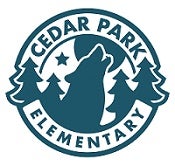Cedar Park Community Agreement
Who are we?
Cedar Park is a diverse community of learners that cooperatively inspires a life-long love of learning through caring relationships and thoughtful instruction.
We work to dismantle racist structures that marginalize groups of people based on race, ethnicity, gender identity, neurodiversity, cultural practices, beliefs, and ability level, including the intersectionality within these groups.
We believe…
- Everyone should feel safe and supported (physically, emotionally, and academically) through healthy, trusting relationships.
- Students and staff value and respect a diversity of ideas, contributions, and perspectives because it brings a broader understanding as we learn together.
- Students learn by watching adults. We (staff, families, community partners) have a responsibility to model kindness, acceptance, collaboration, respect, and repair of wrongs.
- Making a mistake provides opportunities to learn and grow for students and adults. Growth happens over time, whether it be academic or social-emotional.
- Our responsibility is to dismantle systems within our control that have traditionally marginalized groups of people.
- We must focus on the well-being of the whole child to effectively educate students and prepare them for the world.
What does that look like and how do we model it?
- We ask for help when needed and we support learning with warmth, patience, and empathy.
- We accept the impact of our actions and our words, despite the good intentions that may have driven them.
- We learn to understand and regulate our own emotions, talking to those we trust to help us process feelings, and connecting with those we may have harmed to restore relationships and avoid future conflict and misunderstandings.
- We use restorative practices for problem solving and social justice (may include: conversations, a break, hearing both sides, understanding the wants and needs of others).
- We treat our students with dignity, and we resist diminishing a child’s self-esteem (e.g., we refrain from scolding, labeling, yelling at, embarrassing, or any kind of shaming). We help them learn problem-solving skills rather than punish for having problems.
- We see our families as partners in learning how to best help their student. We will connect with families to share what has happened, the steps we have taken, and if they have any further information that will help with these restorative practices.
- We will only share the details of your student with your family. We will preserve the dignity and confidentiality of the other student(s) involved and that of their family by not sharing any details or disciplinary actions taken.
How do we repair the community when there is conflict?
For simple everyday disagreements (e.g., who goes first for a game), we have several strategies we can use to resolve disputes quickly and equitably, which may include:
- Mood Meter and other RULER tools
- Second Step strategies
- Cedar Park’s Wheel of Choice
- Rock, Paper, Scissors
For more complex conflicts, we create space to process feelings and impacts. This is approached through restorative practices that focus on problem-solving skills and social justice. Restorative practices strengthen and build skills in self-awareness, empathy, and agency in expressing one’s own needs. This approach is based on research and has proven to have a more positive, meaningful, and lasting effect in resolving and avoiding conflict. It can be time-consuming and hard work, but it has larger dividends in fostering a connected, inclusive, and supportive community.
Restorative Justice approach for larger conflicts can look like:
- Provide privacy from others and/or a break if needed.
- Trusted adults help process feelings and understand impact, then facilitate a restorative process with all parties to collaboratively problem-solve.
- Each person involved has the chance to share their feelings, how they understand the situation, and how they would like to work to avoid similar conflicts in the future.
- We work to repair relationships by focusing on problem-solving and working side-by-side with students to help them learn to focus on solutions rather than punishment.
- Some rebuilding of relationships may include direct and meaningful consequences to actions (e.g., cleaning up a mess that was made, working to remake a project that was damaged, performing some community service within the school).
- Write or give apologies if appropriate (the one harmed is not required to accept if they are not ready yet). Disciplinary action may need to take place and will be appropriate to the situation. We have a continuum of disciplinary steps, processes, and tools and we work as a team to take actions that will be most effective and keep your child’s best interests in mind.
These practices look different depending on the situation and people involved. There is not one set way to restore and repair harm.
People learn best from their mistakes when time is taken to teach through the mistake and repair the harm, rather than separating from the community through exclusion from school or classroom activities. By focusing on solving a problem rather than supplying retribution or punishment, the student is in a better position to achieve successful outcomes and much more likely to self-reflect, which is necessary for sustainable social growth.
